Garden Shredder Buying Guide
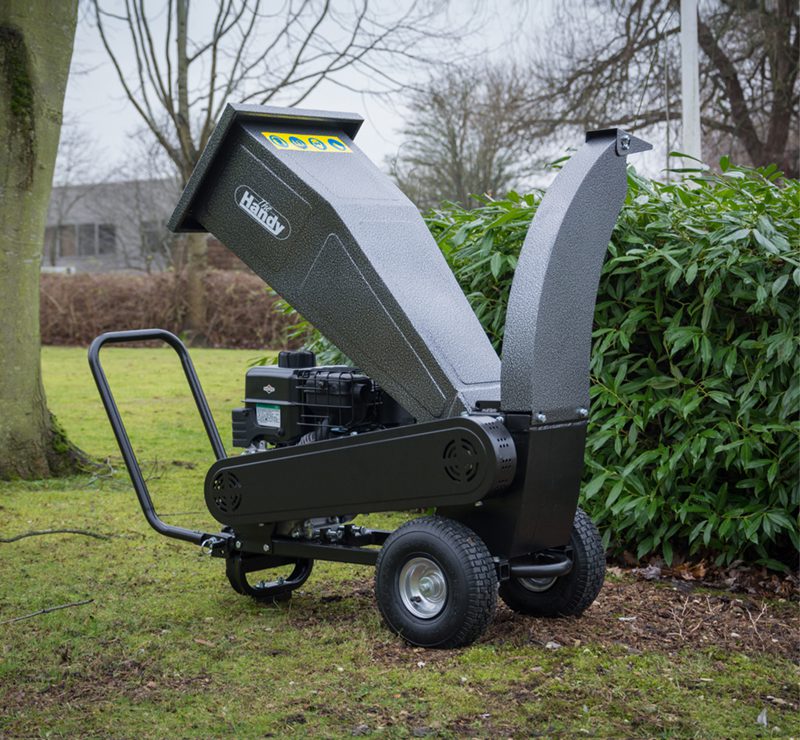
This guide will go over some of the advantages of adding a garden shredder to your tool kit, along with a rundown on the differences between the main types of garden shredder you’re likely to encounter on the market.
Do I need a Garden Shredder?
If you regularly find yourself pruning trees, bushes and hedges then there’s a good chance you will occasionally be left with more waste material than you know what to do with. This has been especially true during the wetter and warmer summers we’ve had in the UK recently, when many garden plants tend to grow faster than you can cut them back – often it seems like you wake up the next day only to discover a fresh batch of wild growth sprouting up from the area you’ve just neatly trimmed.
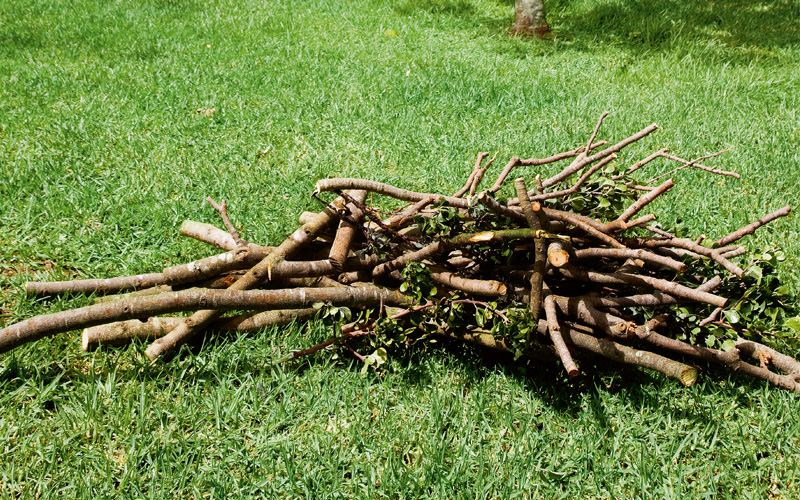
Unfortunately, the piles of spindly offcuts that build up during these pruning sessions can be awkward to deal with. Even when you haven’t got that much by weight, you can easily fill up a bag, wheelbarrow or waste bin in a short space of time. Compost heaps make ideal dumping grounds for leaves but any branches or larger, woody stems will take a long time to break down and decompose, making them less than ideal – even if you can fit them all in.
So unless you have the luxury of space in which to dump it and forget about it, this waste material often ends up being burnt on a bonfire or getting transported off the premises to become someone else’s problem (sometimes for a fee). In many cases, waste will be refused or simply difficult to transport if it is over a certain size, so you may have to spend just as long breaking it up into smaller pieces.
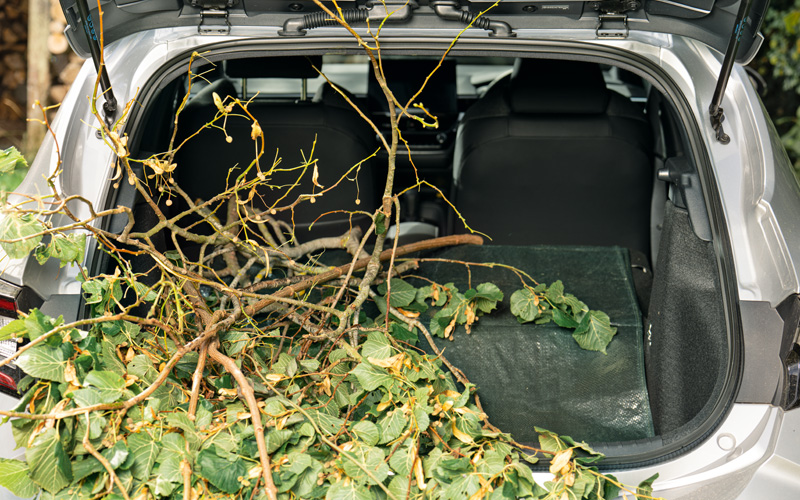
The benefits of a shredder are twofold – firstly, it makes the waste much easier to bag up, store and transport, by reducing its bulk and enabling it to be compacted down. This means that large piles of branches and leaves can be neatly compressed and packed away for temporary storage or convenient disposal. And secondly, it can turn this waste into something useful that you can put back into the garden, meaning you may no longer need to come up with new and inventive ways of getting rid of it.

Uses for Shredded Waste
As mentioned previously, the more substantial chunks of pruning waste will cause problems if you throw them straight onto a compost heap. Thick and woody growth can take years to break down to the point where it is suitable to go back into the soil, and in the meantime it will simply clog up your compost, meaning getting to the good stuff can quickly become a difficult and frustrating challenge. However, if you shred it into fine pieces first, not only will it be easier to shovel and pack down, but decomposition will take effect more rapidly and it will soon be assimilated into the rest of your heap. This pays off for lighter debris too – the more you can reduce it in size, the quicker it will decompose.
Compost isn’t the only thing you can make with a garden shredder – due to their slow rate of decomposition, wood chips make an ideal mulch for use on top of cultivated soil. As well as providing a decorative finish, this additional layer helps to retain moisture and suppress weeds during the summer, while in the winter it can help to shield the roots of sensitive plants from freezing temperatures. You can purchase bags of wood chips from garden stores for this purpose – but with a shredder you can make your own!
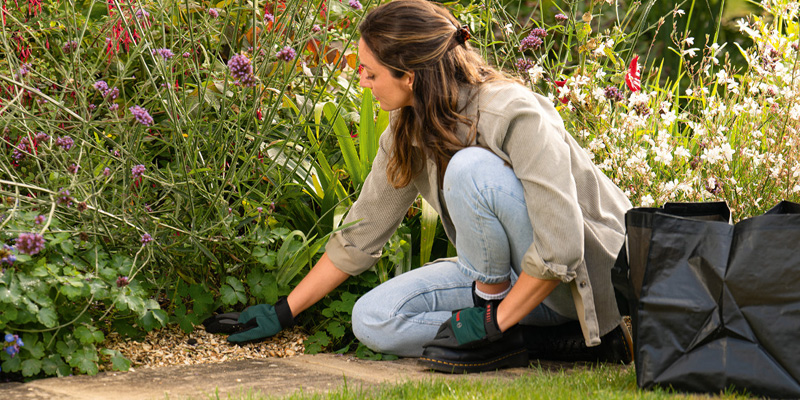
Wood chips can also be used as a material for other landscaping projects – for example, they can be used to define garden paths or create a soft and spongey surface layer for a childrens play area.
What Type of Garden Shredder Do I Need?
You’ll find that garden shredders usually fall into three main categories: Impact Shredders, Roller Shredders and Chipper Shredders. Or actually you might not have found that, as they are often sold under a variety of different labels. For example, Impact Shredders may also be referred to as Rapid Shredders, while Roller Shredders are often called Drum Shredders, Crushing Shredders, Quiet Shredders or Silent Shredders. In each case, the way they work is slightly different and each has its pros and cons.
Impact Shredders
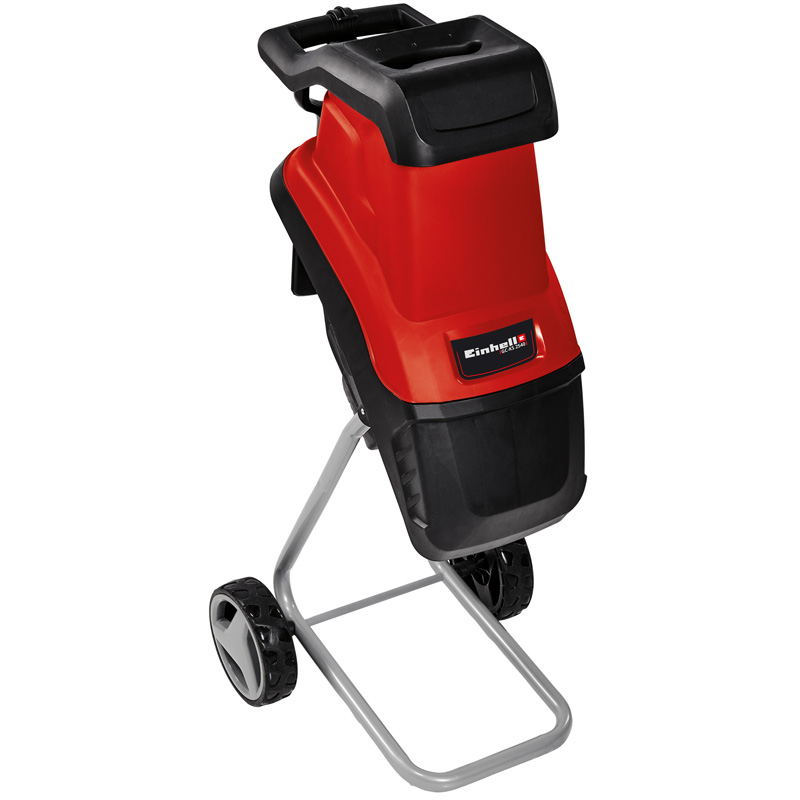
- Usually the cheapest and lightest type of garden shredder
- Powered by electricity (mains or battery)
- Typical Maximum Branch Diameter: 45mm
- Most effective on green (young) offcuts
- Noisy
- Blades will eventually lose their edge and require maintenance
The Impact Shredder (or Rapid Shredder) chops up incoming matter with one or more blades which spin around inside the machine. The operator has to keep feeding the material in (a handheld plunger is typically provided) and as long as the blades remain sharp, they can do the job pretty effectively – they will chop the material up finely and are ideal for leafy, green material. Impact shredders are also generally the lightest and most affordable of garden shredders. On the other hand, they are noisy and fairly aggressive – the blades can whip the branches about while you’re feeding them in and spit debris back out into your face so your PPE checklist typically includes gloves, ear defenders and eye protection.
Roller Shredders
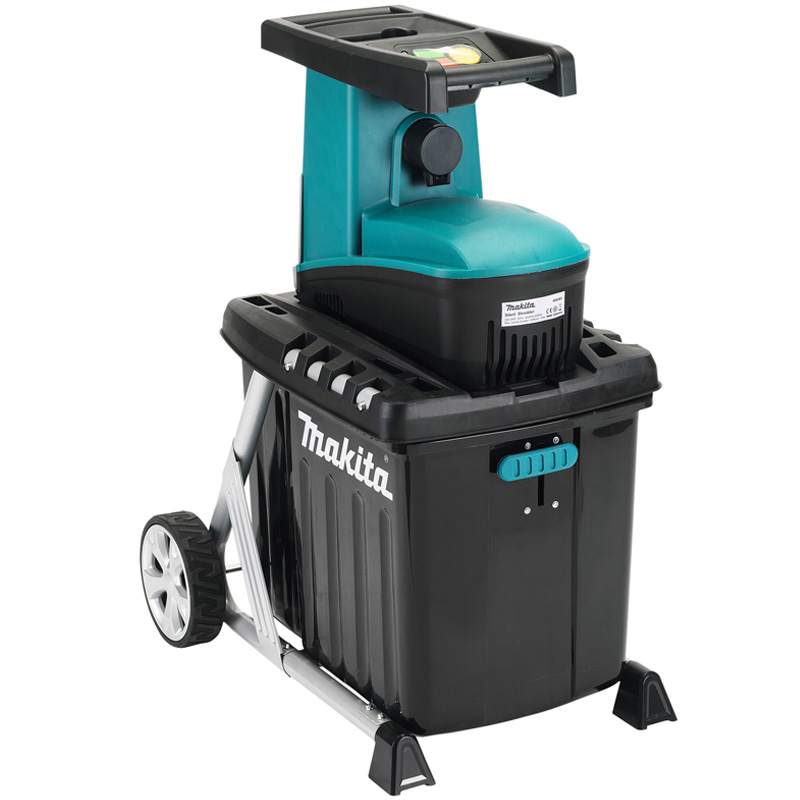
- Intermediate price
- Powered by mains electricity
- Typical Maximum Branch Diameter: 45mm
- Most effective on dry, woody branches
- Roller feeds the material automatically
- Quietest option out of all garden shredders
- Prone to blockages
- Heavier than impact shredders
Roller Shredders tend to be a heavier and more expensive type of garden shredder compared to the Impact types – the reason being that they are fitted with internal drums which pull the material into the machine, where it is crushed and chopped up. The roller mechanism helps take a lot of the effort out of the input stage, and these garden shredders are easier on the ears (which is why they are often known as quiet shredders or silent shredders). Some disadvantages are that they can be prone to blockages, especially with greener clippings, and you can expect to have to spend some time opening them up to clear these from time to time.
Chipper Shredders
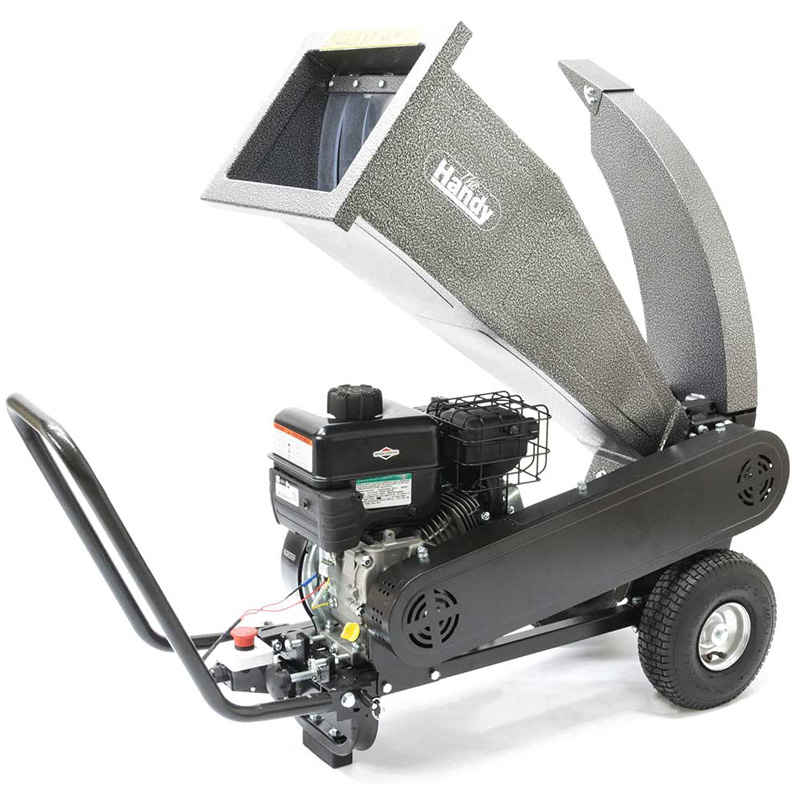
- Usually the most expensive option
- Powered by petrol
- Typical Maximum Branch Diameter: 50mm
- Perfect for making wood chip mulch
- Suitable for large workloads
- Ideal for larger properties
- Require regular maintenance and safe storing of fuel
- Noisy
These machines run on petrol engines and are usually the most powerful and effective type of garden shredder, being able to rapidly reduce large waste piles into perfectly formed wood chips which are great for use as mulch. They are ideal for larger properties as they can cope with heavy duty workloads and, being petrol-powered, they don’t need to be used near a power socket. Although their larger size can make transportation awkward, they are also the shredder of choice for mobile professionals like tree surgeons or landscapers since they can be set up at most work sites if required. Petrol is not without it’s disadvantages of course – buying, running and maintaining an engine involves spending a bit more time and money than with electric alternatives. On top of that they are loud machines which produce noxious fumes, so should not be used in enclosed areas.
Types of Garden Shredder: Summary
Generally speaking, the more you spend on a shredder, the more work you can expect it to be able to do, but whether you will appreciate this extra performance depends on the type of workload you’re likely to put through it. The cheapest impact shredders (which can be found for less than £100) will be fine for small batches of leafy clippings, spending a bit more on a roller shredder will help to make more pleasant work of bigger batches, while for heavy duty shredding and for making perfect wood chips, a big wood chipper machine is the way to go. There are other considerations to bear in mind as well as the general design though, and it will be worth looking into these next points before making a purchase.
Maximum Capacity
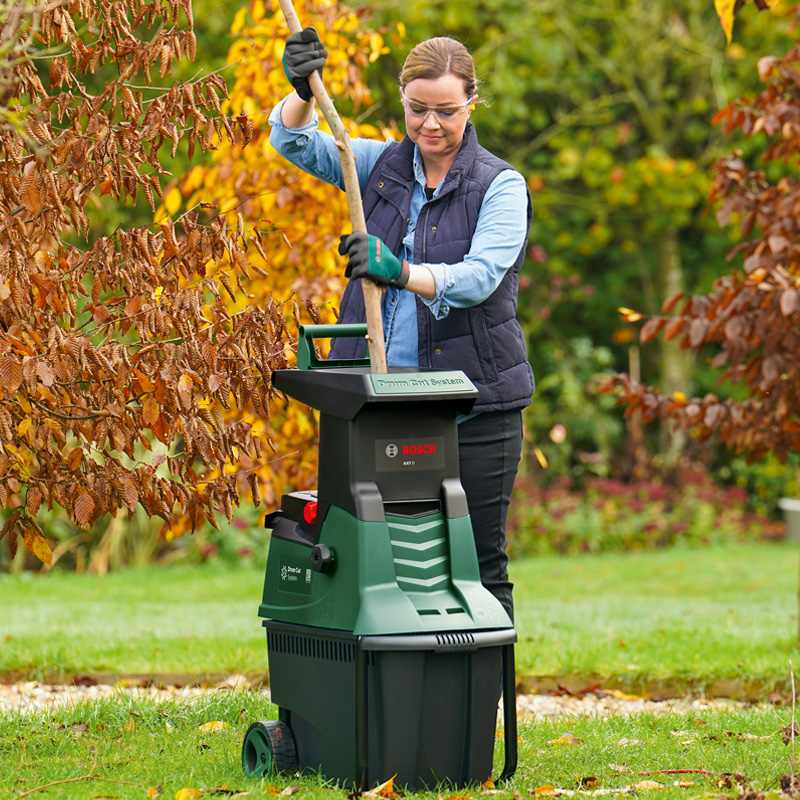
Be aware that the quoted maximum branch diameter is typically based on green waste rather than hard, woody branches – and if its the latter that you’ll be putting through the machine, it’s a good idea to halve this figure to get an idea of the maximum hard branch that will be appropriate for shredding. This is because this denser and harder material requires a lot more effort to break down. Of course if the specifications refer to dry or hard branches specifically, then its safe to assume that these figures don’t need to be adjusted.
Size and Weight
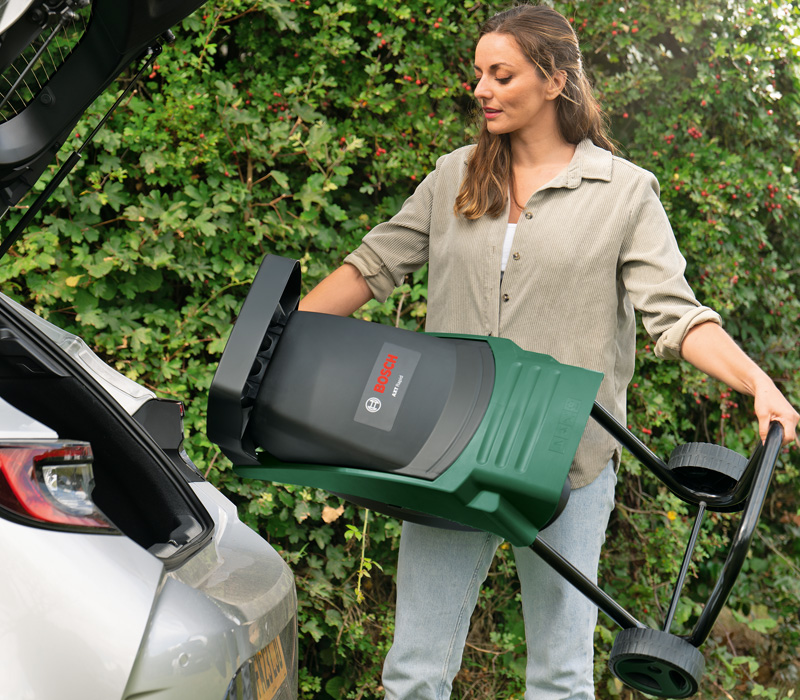
While a big petrol wood chipper will make short work of most garden shredding jobs, its worth bearing in mind that many people won’t have the storage space for one, and even the intermediate sized roller shredders can be fairly hefty pieces of equipment. It can be difficult to get a sense of scale when looking at product photos online so before ordering any kind of garden machinery its always advisable to carefully check the dimensions to make sure you can fit it into your shed or garage, and that its going to be possible to wheel it into any part of your property where it needs to be used. Additionally, you’ll want to make sure you’ll be comfortable with lifting it if you need to negotiate steps or other obstacles.
Battery Powered Shredders
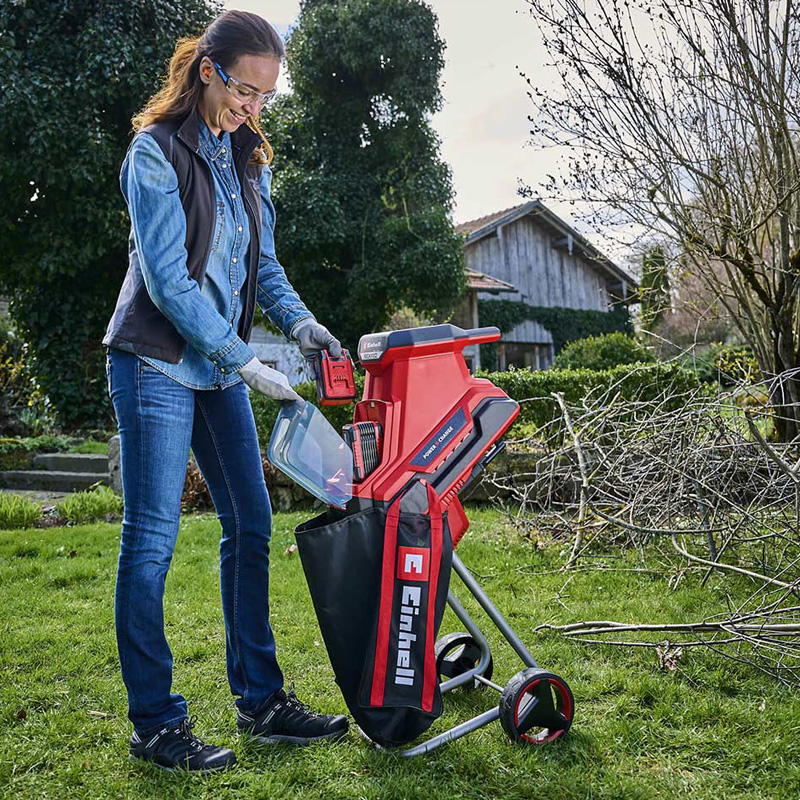
Up until fairly recently, a battery powered shredder was not a realistic proposition for most people – simply because they weren’t available. But cordless power tool technology is making huge leaps forwards these days, and despite how ridiculous this would probably sound to people from the very recent yesteryear, it is now perfectly possible to run a garden shredder on the same batteries that you’d put in a normal cordless drill. Obviously the power demand is much greater so you may find you’ll need at least two of them, depending on the voltage of the battery. These new types of cordless shredder are ideal for locations like allotments since they are relatively easy to transport and extremely convenient to use. If you’re wondering what batteries you’ll need, you’re probably best off going with the highest AH (Ampere-Hours) rating you can afford – the higher capacity batteries can store more energy inside them, which means you’ll get more shredding done before they’re drained and need recharging.
Corded Electric Shredders
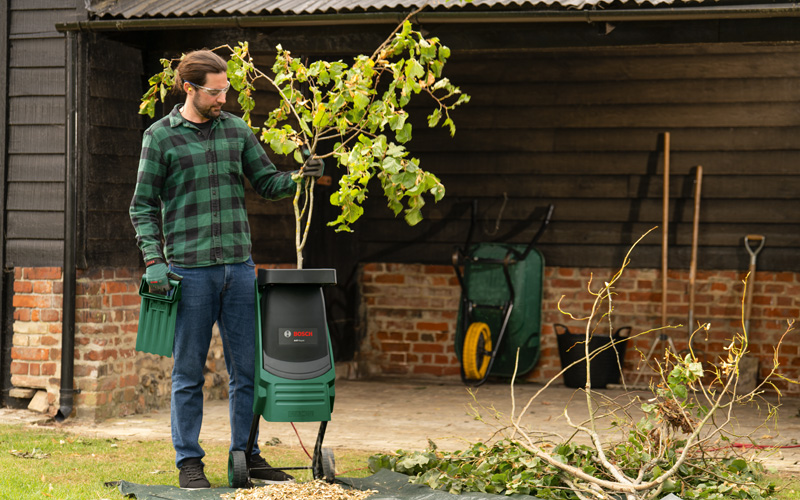
While plugging into the mains means you have a more limited radius of operation than with other options, these shredders tend to be more affordable and you’re not going to be held back by limited runtime either. You’ll find the wattage quoted in the specifications which gives you an idea of how powerful any particular model is, but you’ll also need to pay attention to this if you intend to use an extension lead. For safety you should always ensure that any connected appliances are not drawing more current than a cable extension is rated for (this will differ between extensions and you should find it printed on the unit itself): additionally, be aware that especially powerful motors can trip breakers when they are used with extension reels and it is always preferable to plug these directly into a mains socket instead. Gardens can be damp environments at any time of the year, and for this reason it is always advisable to make sure there is an RCD in the circuit when using corded tools outside.
Petrol Shredders
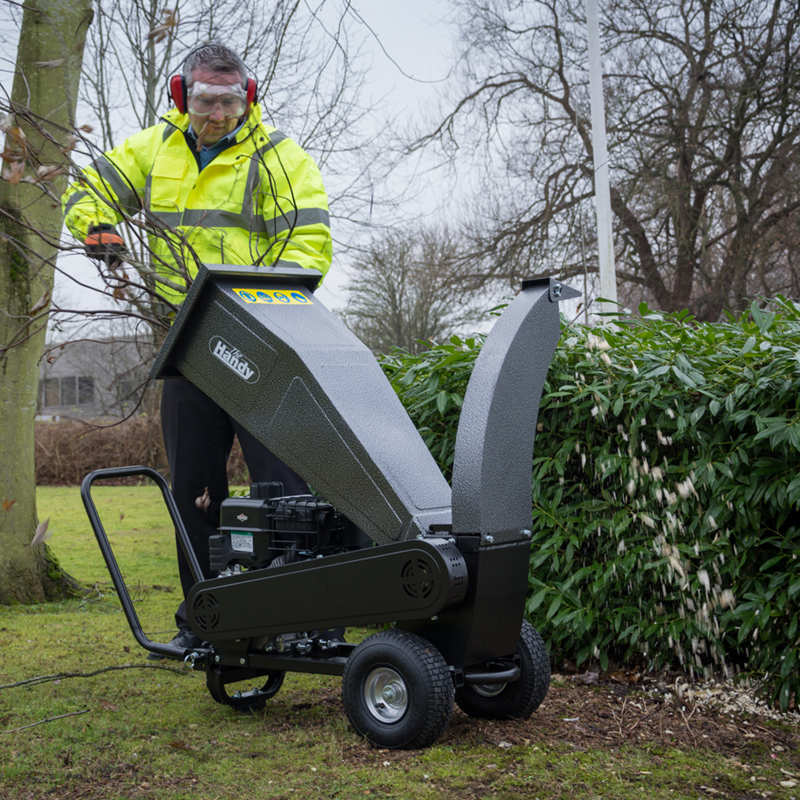
Petrol powered machines are loud, heavy and inconvenient – not only do you have to regularly buy and transport fuel to keep them running, but you have to perform regular maintenance on them to keep them running in prime condition from year to year. But if you can live with all of these things, they also deliver extremely powerful performance which is currently unmatched by the electric types, and they are therefore ideal for heavy workloads. On top of this, as long as you maintain them they can last for a very long time too. If you’re thinking of buying a petrol powered tool for the first time, be aware that there are legal regulations on how to safely store petrol around domestic properties and you should make sure you’re able to comply with these regulations to reduce any fire risk.
Shredder Safety
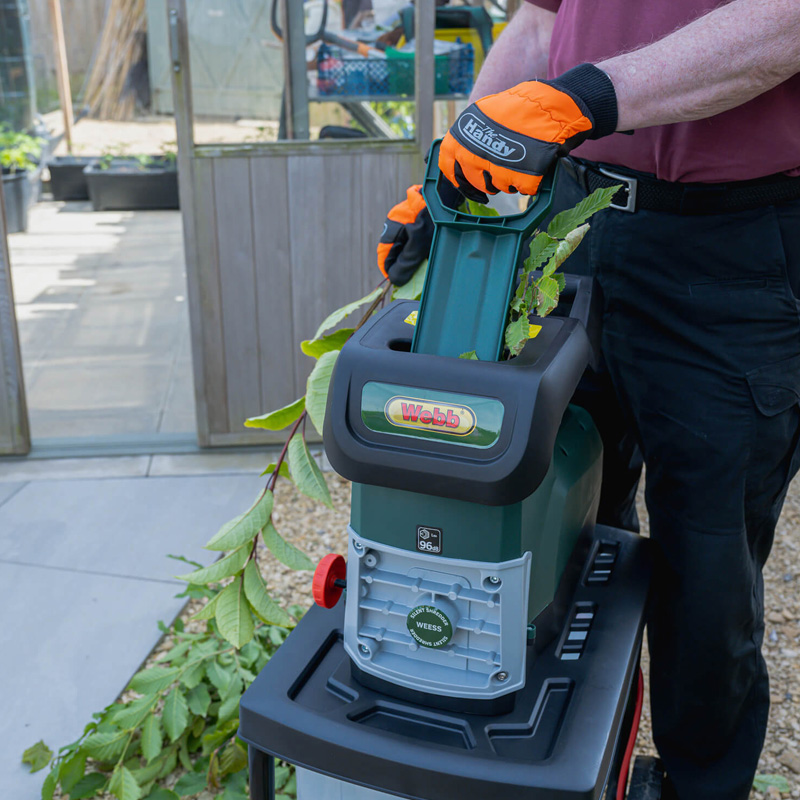
Eye protection should always be worn when operating these machines, and many of them are loud enough to require hearing protection as well. For obvious reasons you should keep your hands well out of the machinery, but unfortunately it is easy to forget this when a jammed branch or other obstruction suddenly needs clearing to restore operation. Always make use of any included accessories like plungers to keep yourself at arms length, and if you have to investigate a problem more thoroughly then ensure that the power is completely disengaged (e.g by pulling the plug or removing the batteries) first.
PPE and Other Accessories
If you feel like you’d prefer a bit more protection than a standard pair of safety glasses or goggles, a flip down safety visor or forestry visor will shield your entire face against accidental scratches or flying debris and many of them can incorporate a pair of ear defenders as an all in one solution as well. Its not uncommon for garden shredders to be supplied with a collection box for gathering the processed material, but if yours doesn’t come with one you way also wish to invest in some kind of large container like a flexi tub or pop up garden waste bag.
Where can I Buy a Garden Shredder?
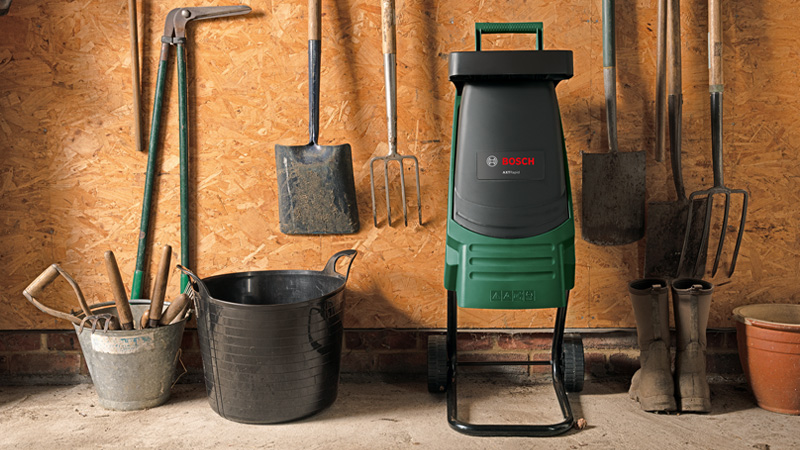
At Tooled Up we stock all three types of shredder, so if you’ve decided you want to add one to your tool kit why not take a look at our selection here.
Categories mentioned in this article:

I have a 2 acre plot and have a garden master old four wheeled ..I need to replace it ??drum or blade shredder??up to 120 mm would be nice